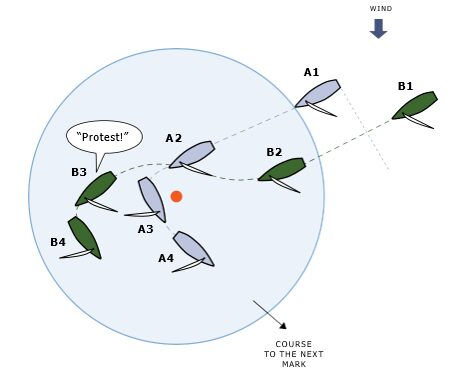THE FINE ART OF BOAT SPEED: GETTING BEYOND THE NUMBERS
- Gasperi Web Designs & Media

- Jun 14, 2023
- 4 min read
May 10, 2023 by Quantum Sails

For one-design sailors, top sailmakers in the class have developed guides to tuning and trim, making boat speed much more of a “paint by numbers” exercise. These are great places to start. For handicap boats of varied design, you will have to create your own set of reference numbers. Collecting data is the key to building your own setup and trim guide. Once you find what works, write it down!
There comes a time, however, when just “putting it on the numbers” doesn’t work. Tuning and trim setup systems are geared for “normal” conditions. But sometimes Mother Nature throws us a curve. It is the ability to recognize and adapt to unusual conditions that makes the game of boat speed so much of a challenge.
WHEN 'PUTTING IT ON THE NUMBERS' DOESN'T SOLVE THE BOAT SPEED PUZZLE: A CLASSIC EXAMPLE
This year’s annual race from Ft. Lauderdale to Key West provided a classic example. The start was a refreshing seven-hour beat into the teeth of the Gulf Stream; plenty of time to get things figured out in terms of what was fast. The breeze started out in the mid-teens and gradually dropped until it pretty much disappeared. The problem was the waves.
It had been blowing pretty hard for the preceding 24 hours, so there were some good-sized, short, choppy waves. Starboard tack took us offshore and pretty much straight into them. Port tack was far kinder and took us toward the beach. Fortunately, the basic strategy was to go right and stay on the shore to get out of the effects of the south-to-north flowing Gulf Stream as much as possible. But you had to come out sometime. On port tack our normal upwind settings for the wind velocity worked just fine. Lead position, sheet tension, luff tension, traveler, etc. were right where we usually were. Plenty of speed and height. No trouble making target speed.
Starboard tack was a different beast. There was nowhere to hide from the waves. Only so much could be done by steering. Eventually you were going to hit one square and watch the boat speed drop two knots. Since the first rule of good upwind performance is “speed first, then height,” we had to do something very different to avoid stopping the boat in every set of waves.
Both jib sheet and mainsheet had to be eased significantly from “normal.” Jib leads were moved outboard and traveler dropped to let the boat bear off without heeling too far. The jib lead was pulled down from normal to accommodate the eased sheet and keep the top of the jib from luffing. Both sheets had to be played aggressively; letting out until we were almost reaching as we prepared to go through a set, trimming on if we could find a flat spot.
We let the target boat speed go well up and just didn’t worry much about the wider angle we had to sail. Normally with the breeze in the low to mid-teens, the jib is cleated once you are up to speed. In this condition it had to be played constantly, even though it meant a body off the rail. This low and fast mode worked, but we still could not wait to get back on port.
Sometimes you find the key to a boat speed puzzle by accident. In the early days (first year) of the C&C 30 one-design class, everybody was learning fast. Good setups were beginning to become clear. We had worked hard as a team and probably had more time on the water than most. Key West Race Week was the first major regatta for the class, and our numbers seemed to be working. After four days we were leading the standings by a small margin and feeling good.
The last day was all to play for and different. The breeze was howling. It was by far the most wind we had sailed in (on the C&C). We were slow from the start. We struggled up the first beat at the back of the pack. The first run was exciting, and we learned some lessons about gybing. Arriving at the leeward mark for round two, we headed upwind. In the process of a fevered rounding, the jib lead was kicked out of the cleat and the clew flew up in the air. The additional twist let the whole top half of the jib luff. Before we could pull the lead down and make the sail “look right,” we suddenly realized the boat was much more manageable with half a jib. We took off. It sure didn’t look good, but the radical setup worked. With newfound wheels, we clawed our way back and barely managed to hang on.
So, keep track of all your settings and work on repeatable speed solutions. Don’t forget to stay open-minded and ready to adapt to unusual conditions. Desperate times may require radical solutions.
For more resources and expertise, browse our full content library, or you can get in touch directly with Quantum Sail and Design Consultant David Flynn.
---------
This content was originally published on SpinSheet.









Comments